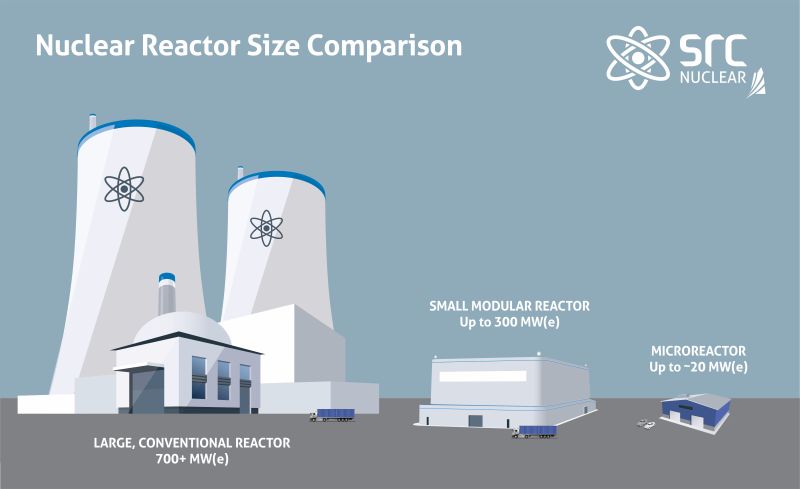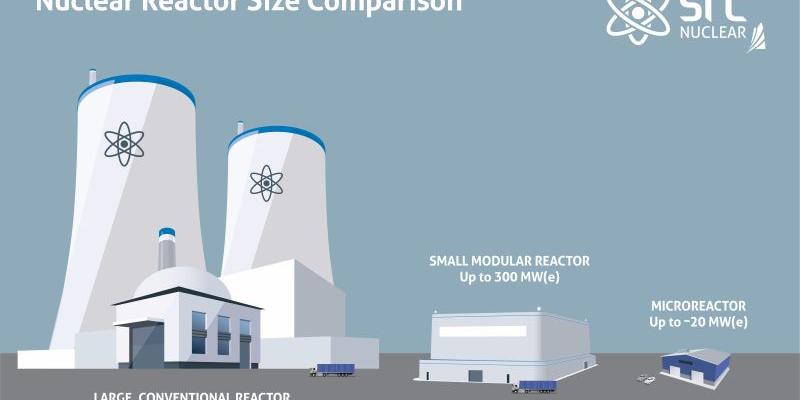Frequently asked questions
As the term suggests, microreactors are a small type of nuclear reactor. Whereas conventional nuclear reactors produce about 1,000 megawatts of electricity (Mwe), various microreactor technologies being developed range from 20 MWe down to less than 1MWe.

Their small size makes microreactors ideal for providing clean, reliable power and heat for specific applications that are off-grid or edge-of-grid. Their scale makes them less suitable for simply adding electricity into an established power grid.
In October 2025, the Government of Saskatchewan released the Saskatchewan First Energy Security Strategy and Supply Plan, which affirms Saskatchewan’s commitment to building a provincial electricity system powered by nuclear energy.
SaskPower is working toward deploying a grid-scale small modular reactor (SMR) to add nuclear power generation to the province’s electrical grid. SRC is working toward the licensed operation of microreactor technology most suited for individual community or industrial site demands, typically in northern or remote areas of the province that are edge-of-grid or off-grid.
SRC continues to pursue the licensing and demonstration of the first nuclear microreactor in Saskatchewan.
Since project launch, SRC has built nuclear capacity and expertise that can be applicable to any microreactor technology. We have also gathered feedback from potential users to better understand their unique energy needs and potential uses of various technologies.
In spring 2022, SRC and Westinghouse Electric Company signed a Memorandum of Understanding to jointly develop a project to locate an eVinci® microreactor in Saskatchewan.
In fall 2025, Westinghouse canceled the project contract with SRC due to their decision to shift focus of their eVinci® microreactor program toward space, defence and government applications, moving away from commercial markets.
SRC’s focus remains on how microreactors could be used to solve energy challenges and create social and economic opportunities in northern and remote areas of the province. SRC is looking at other microreactor technologies of various scale and sizes and their potential applications for the unique needs of Saskatchewan.
News Releases
- August 15, 2024 | SRC and AECL Sign MOU for Nuclear Research and Innovation
- June 6, 2024 | SRC Signs MOU with MLTC to Evaluate Potential Microreactor Applications
- April 29, 2024 | Saskatchewan Taps Into 40 Years of Nuclear Industry Expertise and Experience
- March 15, 2024 | SRC Designated as Primary Organization in Saskatchewan Responsible for Microreactor Development
- December 7, 2023 | Saskatchewan Signs Letters of Intent with Khalifa University

